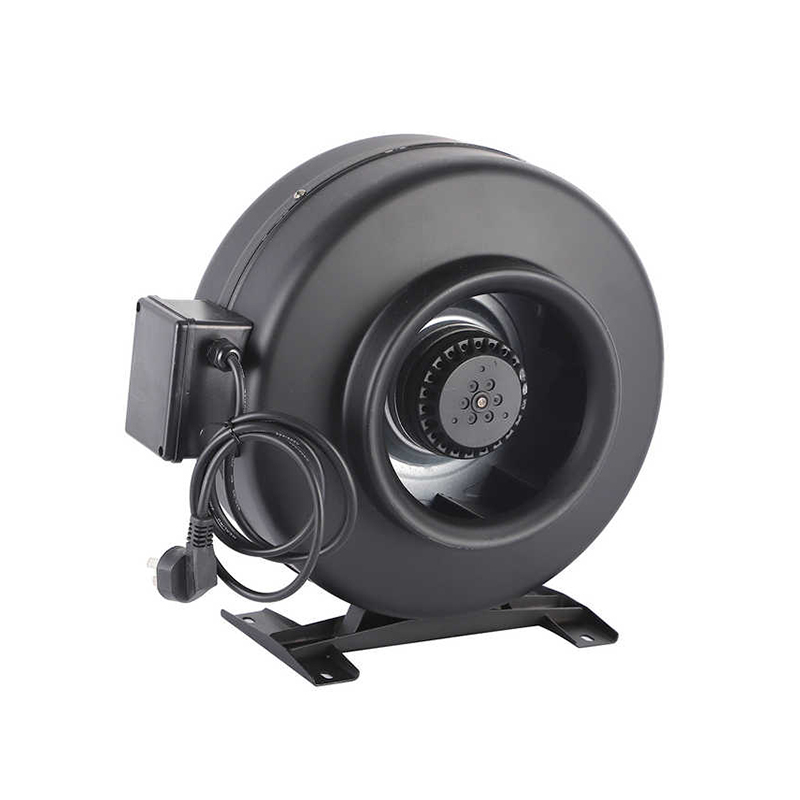Qinlang focuses on providing high-quality products and considerate services, and is committed to meeting every expectation of our customers.
The DKT-133 Cooling Ventilation Double Inlet Air Conditioning Fan is d...
See Details
When it comes to ventilation systems, choosing the right fan can significantly affect airflow efficiency, noise, and energy use. Two common types are Mixed Flow Inline Duct Fans and Axial Fans. While both serve similar purposes, they differ in design, performance, and suitability for various applications. This article explores these differences to help you understand which fan type might suit your needs.
Design and Airflow
Mixed Flow Inline Duct Fans combine features of axial and centrifugal fans. Their blades are angled to move air in a diagonal path, creating higher static pressure while maintaining consistent airflow. This design allows them to handle longer or more complex duct runs more effectively than axial fans. They are often chosen for systems where consistent air delivery is critical, such as in multi-room ventilation or offices with long duct branches.
Axial Fans, on the other hand, have a straightforward blade design that pushes air in a straight line. They are effective in low-resistance systems where air can move freely, such as open spaces or short ducts. Their simplicity makes them suitable for applications that do not require high pressure or extensive ductwork.
| Feature | Mixed Flow Inline Duct Fan | Axial Fan |
| Airflow direction | Diagonal/angled | Straight |
| Static pressure handling | Higher | Lower |
| Suitable duct length | Long/complex | Short/simple |
| Noise level | Moderate/quiet | Can increase in long ducts |
Performance and Efficiency
When comparing performance, Mixed Flow Inline Duct Fans generally maintain airflow under higher resistance, making them suitable for systems with bends, filters, or multiple outlets. They tend to operate quietly and provide steady airflow even at moderate pressure levels. This can improve energy efficiency over time, especially in larger buildings.
Axial fans usually move large volumes of air efficiently in open or low-resistance systems. However, in longer ducts or setups with obstacles, their efficiency drops, and noise levels may increase. Choosing the right fan type can save both energy and maintenance costs over the life of the ventilation system.
Installation and Space
Installation can be another deciding factor. Mixed flow fans are compact and can fit into tight or longer duct systems, offering flexibility in placement. Axial fans are simpler and lighter, which can make installation easier in straightforward setups, but they may require more space for duct runs with bends or turns. Proper installation, including vibration dampers or insulated duct connections, can also help reduce noise for both fan types.
Applications
Both fan types have suitable applications depending on airflow needs:
Considering duct length, airflow requirements, and noise tolerance helps select the appropriate fan. For instance, mixed flow fans are better in multi-story buildings, while axial fans work well in single-room exhausts.
Cost and Maintenance
Cost differences are noticeable but manageable. Mixed flow fans typically cost more upfront due to their complex design but may reduce energy usage in high-resistance systems. Maintenance is straightforward, though regular cleaning ensures long-term efficiency. Axial fans are often less expensive and easier to maintain, making them suitable for simple ventilation systems with fewer obstacles. Checking for dust buildup, blade wear, and motor performance can extend the lifespan of either fan type.
Choosing between a Mixed Flow Inline Duct Fan and an axial fan comes down to duct complexity, airflow needs, and installation constraints. Mixed flow fans provide consistent performance in longer ducts, while axial fans are effective for straightforward, low-resistance setups. By evaluating your system's requirements and maintenance considerations, you can ensure that your ventilation system delivers efficient, quiet airflow over time.